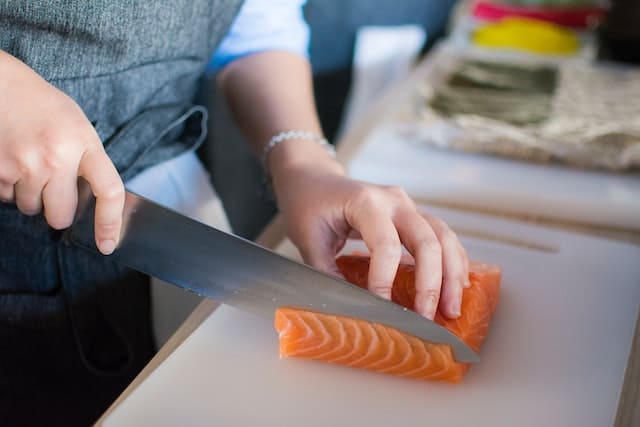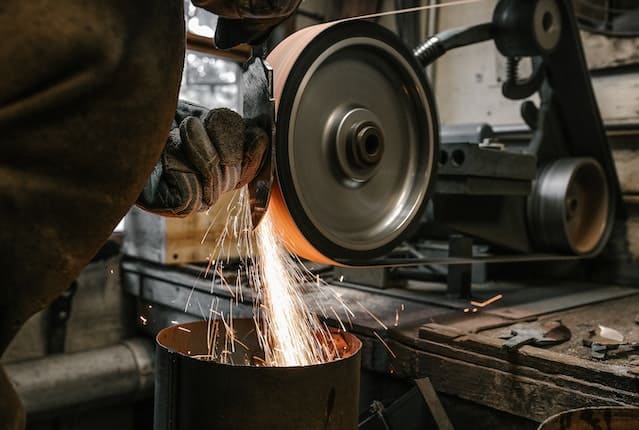Sushi knives are essential for making authentic sushi dishes at home. Choosing the right knife is vital in creating the perfect sushi dish. Various sushi knives are available, each with unique features and benefits. Knowing how to differentiate between them can be daunting, especially for those new to sushi making. This article will discuss the key features of how to choose a sushi knife that best suits your needs.
What is a Sushi Knife

A Japanese sushi knife is a specially designed kitchen tool to make traditional Japanese sushi dishes. It has a long, thin blade crafted from high-quality steel, allowing precise and clean cutting. Sushi knives are used by chefs worldwide to slice fish, vegetables, and other ingredients to prepare their signature sushi dishes.
How to choose a Sushi Knife
Choosing a sushi knife is essential for anyone who enjoys making sushi at home. Sushi knives come in various shapes and sizes, so deciding which is best for you can be difficult. A good sushi knife should be sharp enough to cut through the toughest ingredients while still being comfortable to handle. To help you make the right choice, here’s a brief guide on choosing a sushi knife that will meet your needs and preferences.
Let’s dive into detail on choosing a quality sushi knife.
Identify Your Needs
When choosing the best sushi knife for your needs, there are several important factors to consider. First and foremost, you’ll need to identify what blade you need for your specific tasks, such as:
- A small, lightweight filleting knife
- A larger, heavier sashimi blade?
- Cutting thin slices of fish or thicker chunks?
Blade Material

The right blade material will depend on how you intend to use the knife and your preference for sharpness, durability, and ease of maintenance. High-carbon stainless steel blades are famous for sushi knives due to their strength and hardness.
These blades can be sharpened easily, hold an edge well, and resist corrosion from acidic ingredients like soy sauce or wasabi. Other materials, such as ceramic or traditional Japanese carbon steel, may also be used but require extra care when sharpening and maintaining them. Ceramic blades are tough yet brittle.
Handle Material
When choosing a sushi knife, the handle material of your knife is an essential factor to consider. A sushi knife’sknife’s handle material affects its weight, balance, durability, and longevity. Commonly used materials for sushi knife handles include wood, plastic, or stainless steel.
- Wood handles are famous for their classic look and feel but may require more maintenance than other materials.
- Plastic handles are lightweight and easy to clean, making them great for busy kitchens or those looking for convenience.
- Stainless steel handles are strong and resistant to rust and corrosion but can become slippery when wet – making them less ideal in wetter environments like professional kitchens or fish markets.
Regardless of which material you choose, pick something that feels comfortable in your hand, as it will make using your sushi knives much easier.
Size and Weight
When choosing the perfect sushi knife, size and weight are essential factors. Understanding how these two characteristics interact is key.
It’s important to note that larger knives may not be ideal for novice users due to their increased potential for accidents and difficulty controlling them. However, for experienced chefs who have already developed proper cutting techniques, bigger sizes can prove helpful and efficient when slicing through tougher materials. On the other hand, lightweight blades provide more control over smaller cuts but require extra precision due to their reduced heft and size.
Look for Comfort & Balance
When selecting a knife for sushi, comfort and balance should be of utmost importance. The handle should be comfortable in your hand, with enough weight to not feel too light or heavy when cutting ingredients.
A balanced blade is also essential; it should not wobble when held upright. Look for handles made from high-quality materials like wood, plastic, or stainless steel, as they will last longer and won’t rust easily over time.
Blade Sharpness
A sharp blade is essential for making precise slices of fish and other ingredients, so choosing a sushi knife that can be kept consistently sharp is important.
When selecting a sushi knife, look for high-quality steel made from carbon or stainless steel. Carbon steel knives tend to remain sharper for longer than stainless steel knives, but they must be cared for properly as they are prone to rust or discoloration over time. Stainless steel knives are easier to maintain and do not require specialized care; however, they may need more frequent sharpening to keep the blade at its optimal level of sharpness.
Types of Sushi Knife
Sushi knives are an essential component of a sushi chef’s toolkit. Whether you’re looking for precision cuts, ease of use, or a unique aesthetic to add to your kitchen, there are many different types of sushi knives. Each has its advantages and disadvantages, so it’s essential to understand the differences before purchasing.
Conclusion
Choosing the right sushi knife for your kitchen needs is an important decision that requires careful consideration with a wide variety of styles and sizes available, it’s challenging to know which is best for you.
This brief guide provided valuable tips on making the right choice when shopping for a sushi knife. It’sIt’s essential to assess your skill level, consider the typical food you will be cutting and decide if you want a single- or double-bevel blade.

